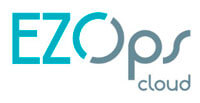Bitbucket Pipelines, Docker Compose, and Semgrep have emerged as indispensable tools for modern software development. This article explores how integrating these technologies can enhance the efficiency and reliability of your development workflow.
Understanding Bitbucket Pipelines
Bitbucket Pipelines provides a powerful platform for automating the software development process. Leveraging YAML configuration files, developers can define custom workflows to build, test, and deploy their applications seamlessly. Integrating Docker Compose and Semgrep into Bitbucket Pipelines extends its capabilities even further.
Harnessing the Power of Docker Compose
Docker Compose simplifies the management of multi-container Docker applications. By defining services, networks, and volumes in a single YAML file, developers can orchestrate complex environments with ease. Integrating Docker Compose into Bitbucket Pipelines enables consistent, reproducible builds across different environments, streamlining the deployment process.
Improving Code Quality with Semgrep
Semgrep is a lightweight static analysis tool that helps developers identify and fix potential security vulnerabilities and code quality issues early in the development lifecycle. By writing custom rules in the Semgrep rule language, teams can enforce coding standards and best practices specific to their projects. Integrating Semgrep into Bitbucket Pipelines ensures that code quality checks are performed automatically as part of the CI/CD process, reducing the risk of introducing bugs or security vulnerabilities.
Integrating Bitbucket Pipelines with Docker Compose
Integrating Bitbucket Pipelines with Docker Compose is straightforward. By adding a simple configuration to the bitbucket-pipelines.yml file, developers can define the build and deployment steps using Docker Compose commands. This approach enables consistent, isolated build environments that closely mirror production, enhancing the reliability of the CI/CD pipeline.
Automating Code Analysis with Semgrep in Bitbucket Pipelines
Integrating Semgrep into Bitbucket Pipelines requires adding a step to execute Semgrep against the codebase. By specifying the desired Semgrep rules and configurations in the pipeline script, developers can automatically scan their code for potential issues with each commit. Any violations can trigger alerts or fail the build, preventing low-quality code from being merged into the main branch.
Conclusion
By combining Bitbucket Pipelines, Docker Compose, and Semgrep, development teams can create a robust CI/CD pipeline that automates build, test, and deployment processes while ensuring code quality and security. This integration streamlines the development workflow, accelerates time-to-market, and enhances the overall reliability of software applications. Embracing these technologies empowers teams to deliver high-quality software with confidence in today’s fast-paced development landscape.
